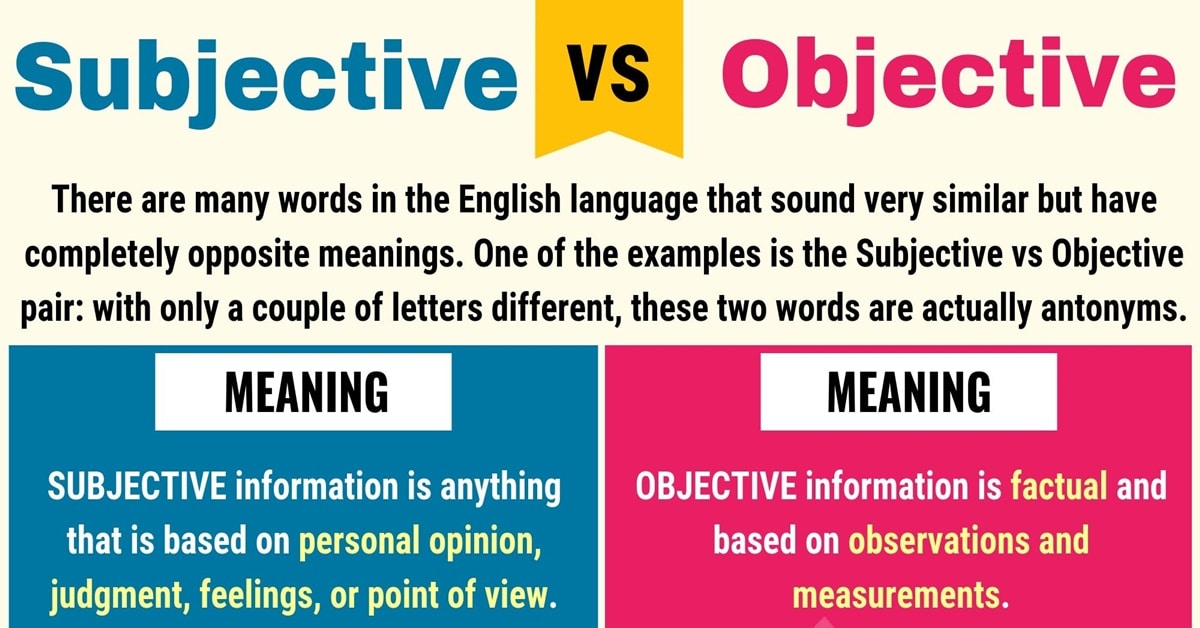Understanding The Differences Between Content Objective And Language Objective
In the realm of education, particularly in language teaching, the terms "content objective" and "language objective" are frequently discussed. These objectives serve as crucial components in lesson planning and curriculum design, ensuring that educators meet both content knowledge and language acquisition needs. However, understanding the distinction between the two can significantly affect how teachers approach their instruction and how students engage with the material. This article aims to clarify these two concepts, providing insight into their definitions, applications, and importance in the language learning process.
Content objectives are focused on what students are expected to learn in terms of knowledge or skills related to a specific subject area. On the other hand, language objectives emphasize the language skills that students need to develop in order to effectively communicate their understanding of the content. By recognizing the interplay between these objectives, educators can create a more holistic approach to teaching that caters to both cognitive and linguistic development.
As we delve deeper into "content objective vs language objective," we will explore their definitions, examples, and how they can be effectively integrated into lesson plans. Understanding these differences not only enhances teaching methods but also enriches the learning experience for students, enabling them to better grasp complex concepts while improving their language proficiency.
Read also:Effective Techniques To Remove Slime From Carpet A Comprehensive Guide
What is a Content Objective?
Content objectives outline the specific knowledge or skills that students are expected to acquire during a lesson. They are measurable and focused on the subject matter, providing a clear target for both teaching and assessment. For example, a content objective in a science class might state that students will understand the process of photosynthesis. This objective helps educators design lessons that align with educational standards and ensure that students grasp essential concepts.
How are Content Objectives Developed?
Developing effective content objectives requires careful consideration of the curriculum and educational standards. Educators typically follow these steps:
- Identify the key concepts and skills relevant to the subject area.
- Align the objectives with state or national standards.
- Make the objectives measurable and specific.
- Consider the diverse needs of students to ensure inclusivity.
What is a Language Objective?
Language objectives focus on the specific language skills students need to acquire in order to communicate effectively about the content. These objectives can include listening, speaking, reading, and writing skills. For example, a language objective for the same science lesson on photosynthesis might state that students will be able to explain the process in writing and participate in a class discussion. Language objectives are crucial for supporting students, particularly those who are English language learners, as they work to express their understanding of the content.
How are Language Objectives Created?
Creating language objectives involves identifying the language skills necessary for students to engage with the content. Here are some steps to consider:
- Analyze the language demands of the content being taught.
- Determine the specific language functions required (e.g., explaining, summarizing).
- Incorporate vocabulary and grammar that students need to know.
- Design activities that promote the use of these language skills.
Why Are Content Objectives and Language Objectives Important?
Recognizing the importance of both content objectives and language objectives enhances the effectiveness of teaching and learning. Here are some benefits:
- They provide a clear framework for lesson planning and assessment.
- They support differentiated instruction, catering to diverse learning needs.
- They promote a deeper understanding of content through language practice.
- They facilitate better communication between educators and students regarding learning goals.
How Can Educators Integrate Content and Language Objectives?
Integrating content and language objectives can create a more cohesive learning experience. Here are some strategies:
Read also:Discover The Best Resorts For Your Next Getaway A Comprehensive Guide
- Design lessons that explicitly connect language skills to content understanding.
- Use collaborative learning activities that encourage peer interaction.
- Assess both content knowledge and language proficiency through integrated assessments.
- Provide feedback that addresses both content comprehension and language use.
What Are Some Examples of Content and Language Objectives?
To illustrate the differences between content objectives and language objectives, here are a couple of examples:
Example 1: History Class
- Content Objective: Students will analyze the causes of the American Revolution.
- Language Objective: Students will participate in a debate using historical evidence to support their arguments.
Example 2: Mathematics Class
- Content Objective: Students will solve linear equations.
- Language Objective: Students will explain their reasoning for each step in solving the equation.
Conclusion: Navigating the Content Objective vs Language Objective Debate
In conclusion, understanding the differences and connections between content objective and language objective is crucial for effective teaching. Recognizing that both objectives serve distinct but complementary roles allows educators to create lessons that foster both content understanding and language development. By integrating these objectives, teachers can enhance the learning experience, preparing students not only to grasp essential knowledge but also to communicate their understanding effectively.
As the field of education continues to evolve, it is essential for educators to remain informed about best practices in lesson planning. The "content objective vs language objective" framework offers a valuable guide for creating a comprehensive approach to teaching that meets the needs of all students.
Article Recommendations


